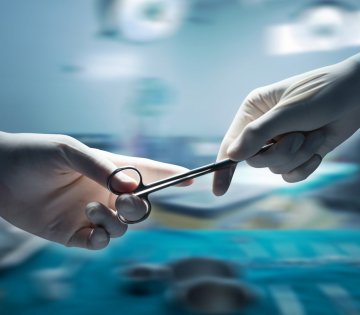Article by Simon Bell (osteopath)
Feeling ‘tight’, ‘stiff’ or having ‘aching’ muscle pain is a very common symptom of day to day life for many people. But what are the causes? And how does one deal with them? These are questions every manual therapist has faced at some point. It's definitely something my patients tell me all the time. The interesting, and possibly unsurprising, part of the answer is the cause is usually not attrributable to a single factor. However, the more interesting aspect is concepts of muscle ‘knots’ and ‘tightness’ or lack of extensibility (i.e. muscles becoming too short) as a cause of this kind of pain have been thrown into question over recent years. Thus, potentially leading to a new understanding and new ways for a patient totarget their pain and reduce their symptoms. Interesting stuff!
Recently this topic has been discussed by such authors as movement therapist Todd Hargrove and research gathered by authors such as Queme (2017) & Hannibal (2014) who that point out the role of the nervous system, psychological factors such as increased stress response and even ischemia (a lack of blood flow) as possible explanations for the feeling of tight or aching muscles. Below is a brief overview of the ideas behind each of these:
Increased Sensitivity:
The link between increased sensitivity and pain or discomfort states that exposure to a repeated painful stimulus - for example, being stuck in a position at work that you find painful - can cause the central nervous system (CNS) to become heightened in its response and, essentially, lower your pain threshold. The significance of this is pain acts like an alarm system and, like all alarm systems, it's prone to faults and/or triggering without any real need. So, in this case, pain can occur more easily and without any tissue damage such as muscle strains or tears.
Psychological Factors:
Feeling tension in the body or feeling ‘tight’ during periods of increased stress is a well known phenomenon. The ideas behind this are complex and too long winded for a full explanation here but may have something to do with increased production of stress hormones such as cortisol. When the body is stressed, the adrenal glands produce stress hormones that can perpetuate a pain response. For example, studies have shown a direct correlation between pain after a dental procedure and the level of perceived stress for patients in the waiting room (Pani et al 2014). As well as this, the release of cortisol in the presence of oestrogen has been potentially attributed to the higher numbers of women suffering with ‘pain syndromes’ (Melzack 2001) (i.e. long term discomfort and pain).
Lack of Blood Flow (Ischemia):
Such authors as Mense 2008 & Queme 2017 have pointed out clear links between myalgia (muscle pain) and increased sensitivity of muscles and the corresponding nerves and ischemia. Simply put, a lack of blood flow and oxygen to a muscle group causes an increase in inflammatory cytokines (small proteins) which causes a cascade of signal changes to the spinal cord. This, in turn, stimulates pain receptors which reach the brain resulting in a painful sensation. This is most often reported in deeper muscles which are more easily affected by reduced movement.
Ok, So What Do I Do About It?
So, the questions still remains; how best to deal with the feeling of aching, stiff or tight muscles? It depends, of course. But it should be approached from more than one angle. Remember that feelinggs of 'tightness' or 'stiffness' are exactly that...feelings. They aren't always in need of radical structural changes. Traditional and instinctive approaches like stretching and self massage, although probably unlikely to change the length or physical properties of the tissue as often thought, can work to change the afferent stimulus (signal to the brain) and reduce descending pain signals. So, they are still a great idea to reduce ‘tight’ and ‘aching’ muscle pain! Taking regular breaks from one position such as getting up from your desk or fidgeting will reduce the chance of ischemia and increase circulation to the painful area, thereby potentially reducing pain through movement.
Where we Come In
At Easy Physio, we can help to reduce ‘tight’ ‘stiff’ or ‘aching’ sensations by changing the context of movements or positions that are aggravating the issue via our tailored programmess. We also include techniques such as stretching and foam rolling to maximise the effectiveness of pain reduction and include really useful lifestyle advice within our wellness review (available on our app and website).
Click the link to join Easy Physio today and take the first step to a life without chronic pain.
● Melzack R, Wall PD. Pain mechanisms: a new theory. Science 1965;150:971–9
● Craig A. How do you feel? Interoception: the sense of the physiological condition of the body. Nat Rev Neurosci 2002;3:655–66
● Butler D, Moseley GL. Explain pain. Adelaide: NOI Group Publishing, 2003
- Queme L,Ross JL, Jankowski M; ‘Peripheral Mechanisms of Ischemic Myalgia’Front. Cell. Neuroscience. 2017 11:419
● Stanton TR, Moseley L, Wong A, Kawchuk GN; ‘Feeling stiffness in the back: a protective perceptual inference in chronic back pain’ 2017;09429-1.




